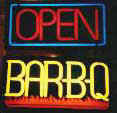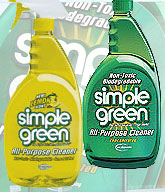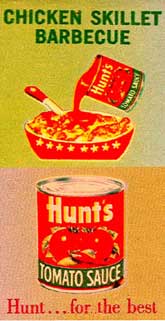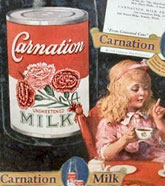|
SAUSAGE, boy do I like sausage. I like it so much
that I actually obtained a meat grinder, stuffer, books, videos, and seasonings.
All the components required to make a good sausage. I then just
started practicing different techniques and seasonings to see what would
work out best. So, I will in a few paragraphs try and help out others
by
identifying some areas where questions might arise and where my experiences might assist in choosing their approach to making
sausage.
My disclaimer is that what I am about to describe is only what
works for me. It is not to be construed as a right or wrong way, it
just happens that I am happy with it.
I think the primary areas of concern, based on my own
experiences, would be the following items:
TYPE OF HARDWARE
I have found there are three types / qualities of hand grinder hardware readily available. I will only talk of hand units
versus electric as that is what meets my needs. The three types are:
1. American made, as in Chop Rite as an example, size 10-12 The best and most expensive. The small and medium units I would
use will cost $65 to $145. Excellent hardware and good results. Too expensive for me.
2. European made, almost always from Poland, size 10-12 The next best and not too expensive. The small and medium units
I would use will cost $35 to $75. Still excellent hardware and
good results. This is what I use. I like them.
3. Asian made, almost always from China, size 10-12 The cheapest and least expensive. The small and medium units I
would use will cost $15 to $55. Okay hardware, Ok results. The problem with this hardware is that they do not include multiple
size grinding plates. And the separate purchase of a grinding plate other than that supplied would cost as much as the unit
itself, if you can find it. I just purchased one as a spare for $14.95 from Northern Tool and Equipment Co., 800-533-5545.
Reference to Stuffers. Well, I believe you need one. You can use
a grinder to stuff but it is slower and can change the texture and
consistency of the product in my opinion. I prefer to use a
separate stuffer. There are many on the market. I like the 3 lb. per load
Polish model. Very nice quality and easy to use. I made a
mounting plate of wood to bolt to the bottom of my unit to ensure ease of
use. I use vice grip clamps to hold it down. You can always buy
electric, hydro, or crank types. But, they cost a lot, are made for
quantities, and are more than I need. I just purchased the Polish 3 lb.
model as a spare for $24.95 from Northern Tool and Equipment Co.,
800-533-5545.
WHERE DO I GET THE HARDWARE
One of the major suppliers to people like us is accessed on the internet or via mail order. They are Allied Kenco Sales,
713-691-2935, 800-356-5189, alliedkenco.com. They are VERY high priced however, full list. BUT, they carry things not easily
accessible elsewhere. They are a good resource and I order most
of my supplies through them.
I found by shopping around for my hardware that I can get it at
my local restaurant supplier, or on the internet, for about 1/4 off
what Allied Kenco charges.
I just got a Northern Tool & Equipment Catalogue,
800-533-5545, that to my surprise, sells the hardware at about half of my purchase
price. The grinder was Asian and $14.95, but the 3 lb. stuffer was the
Polish unit (same as mine), and it was $24.95 (comes with 3
plastic stuffing tubes). I have never seen it anywhere for less than
$69. Allied Kenco sells the exact unit for $93.25. It is REALLY a
nice unit, stuffs 8 lbs. in minutes. I purchased my grinder for
$34.95 at Star Restaurant Supply, 818-782-4460, 6178 Sepulveda Blvd., Van
Nuys CA 91411. It comes with medium and fine grinding plates and 3
aluminum stuffing tubes.
TYPE OF MEAT
Well, I use, as every training film and book I have uses, pork shoulder butt for pork sausage. Of course if you are making a
poultry, beef, veal, lamb, or a mixture of the above type
sausage, then use the appropriate meat. During this discussion I will
stick to pork and pork shoulder butt, as that is what I like the best.
HOW MUCH MEAT
I use a 7 pound or greater Pork Butt. If I make more than that
then I need to eat it in a timely fashion or give it away as it will
freezer burn. Beware, sausage does freezer burn much more quickly than
most other frozen meats. I would not want to keep it in the freezer
longer than 4 months.
HOW
MUCH FAT
That is a politically charged subject today. I personally love,
and eat lots of, fat and butter. I always save the fat trimmings off
my pork butts and pork ribs. I then put the fat into a dated
plastic zip bag and place in the freezer to use later for my sausage grind.
I find I like about 3/4 - 1 lb. extra fat with a 7 lb. butt. Most books say it is not necessary as the butt contains all the fat
you need. My taste buds disagree so I use more.
HOW TO TRIM MEAT FOR GRINDING, WHAT TO BE CAUTIOUS OF
I trim the large fat chunks off then chop the butt into roughly
1 inch wide strips for grinding. I then grind the fat strips and
the additional fat I obtained from the freezer through a medium or
fine grate. Then I toss that ground fat in with the 1 inch butt
strips and grind everything through a coarse or medium grate. This
ensures that you do not have a lot of big fat chunks. Note I am grinding
the meat only once. Also, fat or meat grinds much easier if it is
the form of strips versus chunks. It is self-feeding in a grinder
then.
After I chop the butt into 1 wide inch strips, I put them in the freezer for one to three hours to get partially solidified. Then
when you grind it the moisture is retained. It then grinds as
firm iced particulates. Otherwise you may lose the valuable juices
out the bottom of your grinder with the possibility of a dryer than
desired sausage.
Be careful if trimming the butt while it is partially frozen.
Try and make sure it is defrosted. In an attempt to trim the meat off
the bone, while it was partially frozen, I accidentally trimmed off
some of the hard gristle and bone. This was unknown to me as the meat
was so hard. Then while grinding I just ground it into the meat.
Your first hint might be you hear the bone or gristle being ground
up. If you continue you might be in trouble as the whole mix will have
what you could perceive as little rocks in it. Nice to break teeth
on. I had to throw away the whole batch of completed sausages.
HOW COURSE SHOULD THE GRIND BE, HOW MANY TIMES DO I GRIND
I prefer a medium or course grind, once only. Some people grind course or medium once, then again on a fine grind. I like just
one pass through the grinder as a course to medium grind. Much more
than that and it makes it too mushy for my taste.
WHEN DO YOU SEASON
Well, as in all the steps to making sausage, there are options.
Some folks season while the meat is in chunk mode. Some after it is
ground. Some while it is ground, then regrind to further mix seasonings and make a finer grind.
I personally like to season just after I make my single, and
only, grind. I mix all ingredients by hand. If it is messy and very
cold, you are doing it right. Then I put the meat into a 2 gallon size
plastic zip bag and put into the refrigerator to blend flavors.
This is very important, the flavors must blend. I let it sit at least
3 hours, if not overnight. I always wait untill the day after
making
the sausage to freeze it, allowing better flavor blending.
HOW DO YOU SEASON. BINDERS, MOISTURE & FAT RETAINERS,
& OTHER UNUSUAL INGREDIENTS
I personally like a recipe based on Italian sausage type
seasonings. Probably because I love garlic and fennel. So, what I do is take
a jar, pour a can of beef stock into it, and then mix the rest of
my flavor seasonings into that. Shake well and let blend in the refrigerator or on the counter top for 30 minutes or so.
Some ingredients that sausage manufacturers use, and that I use,
are:
1. Hi-Heat, or Dehydrated milk, helps maintain moisture and fat
while cooking. Makes for a moister product.
2. Dextrose, a sweetener. It is sugar occurring in plants and
blood, and may be made from starch. I also use sugar, but this just
seems to enhance the overall taste. You can substitute sugar, only use
1/2 as much.
3. Binder, typically contains all or some of hydrolyzed soy
protein, monosodium glutamate, soy grits. Helps bind & hold the end
product better. You can substitute dried, fine, bread crumbs. Like in
the Progress blue can.
I will then just pour the appropriate mixtures of the above
along with my seasoning from the jar into a large bowl with the ground
meat. Then I mix by hand until thoroughly blended, and my hands are
totally frozen. Then I put it in the refrigerator for 3 hours, or
overnight. Again, this is necessary for a thorough flavor blending.
CASINGS, WHAT ABOUT THEM
Well, there are many different types. From the types used on
summer sausage, salami, hot dogs, breakfast sausage, and your typical
Italian sausage. So, to keep it simple, I use medium size hog casings.
They work fine for all my needs. I buy them from my local meat
wholesaler by the "hank". A hank will do about 100 - 110 lbs. of
sausage. Cost about $12.00. I separate the hank into roughly 12 casing groups.
Then get 12 small plastic zip lock bags, put some of the brine solution, from the original package they come in, into each bag.
Then put the casing groups into each bag, seal, and put into the
freezer. They last fine till needed. Another method is to buy dried
casings, via mail order from Allied Kenco. Then use as desired. I did buy
these but have never used any yet.
HOW DOES ONE STUFF THE CASINGS
One must clean the casings. I just put a casing in the sink and
turn on the faucet pointed into the end of that casing while I am
holding it open. The water will run through all 10 or 15 feet of casing.
I do this 2 to 3 times. This cleans the brine solution out and
prepares for stuffing.
I then put the casing end over the stuffing tube, mounted on the
stuffer, and then feed the entire length, in a bundle, onto the
base end of the shaft. Then, I add 3 lbs. of seasoned sausage grind
into the stuffer and force out through the stuffing tube and into the
casing. I then tie a knot in the end of the casing. If you tie
the knot prior to inserting the meat into the casing, you will end
up with air in the casing which you do not want.
Continue to feed the meat through the stuffer into the casing.
You will end up with one long sausage, 10 - 15 feet in length. Just
coil it as it comes out of the stuffer onto your stuffing table top.
You will have to learn how much tension to keep on the release of
the casings during stuffing as this is what determines how densely
packed the sausages will be. I don't like a tight pack. Also, a medium
pack allows for easier twisting to create the individual links.
Air bubbles can occur randomly within the casing while stuffing.
You can just puncture the casing with a sharp knife, or puncture
tool, and squeeze the air out. It is no big deal. But it looks terrible
and changes the taste if left in while cooking. I made a puncture
fork just for this. You can also buy them at Allied Kenco.
HOW DO YOU TURN INTO INDIVIDUAL SAUSAGES
Once all the sausage is stuffed and my work table is cleared of equipment I make the individual links. I put a small ruler on
the table top and measure 5 or 6 inches per link then twist 4 times
creating an individual sausage. I then measure the same length
again and twist the opposite direction 4 times. I do this until the
entire length is complete. If you have stuffed too tightly the twisting
can cause the casings to rupture. If too loose then they will look
sloppy. After that just cut into the overall lengths you want
and put into the the refrigerator overnight. I always freeze the next
day to allow the flavors to blend even more. I typically do 3 links in
each segment and put them into an individual small freezer bag. I
find more than 3 is typically too much to eat for a pre-BBQ snack. I
then date and put all the bags into the freezer.
Well, the above is just my opinion and personal taste. A lot of
people have asked how I make my sausages as they want to give it a
shot. Hope this might help somebody proceed further into an area they might
have been curious about.
Dan Cannon,
Dan@BBQbyDan.com
www.BBQbyDan.com
|


















